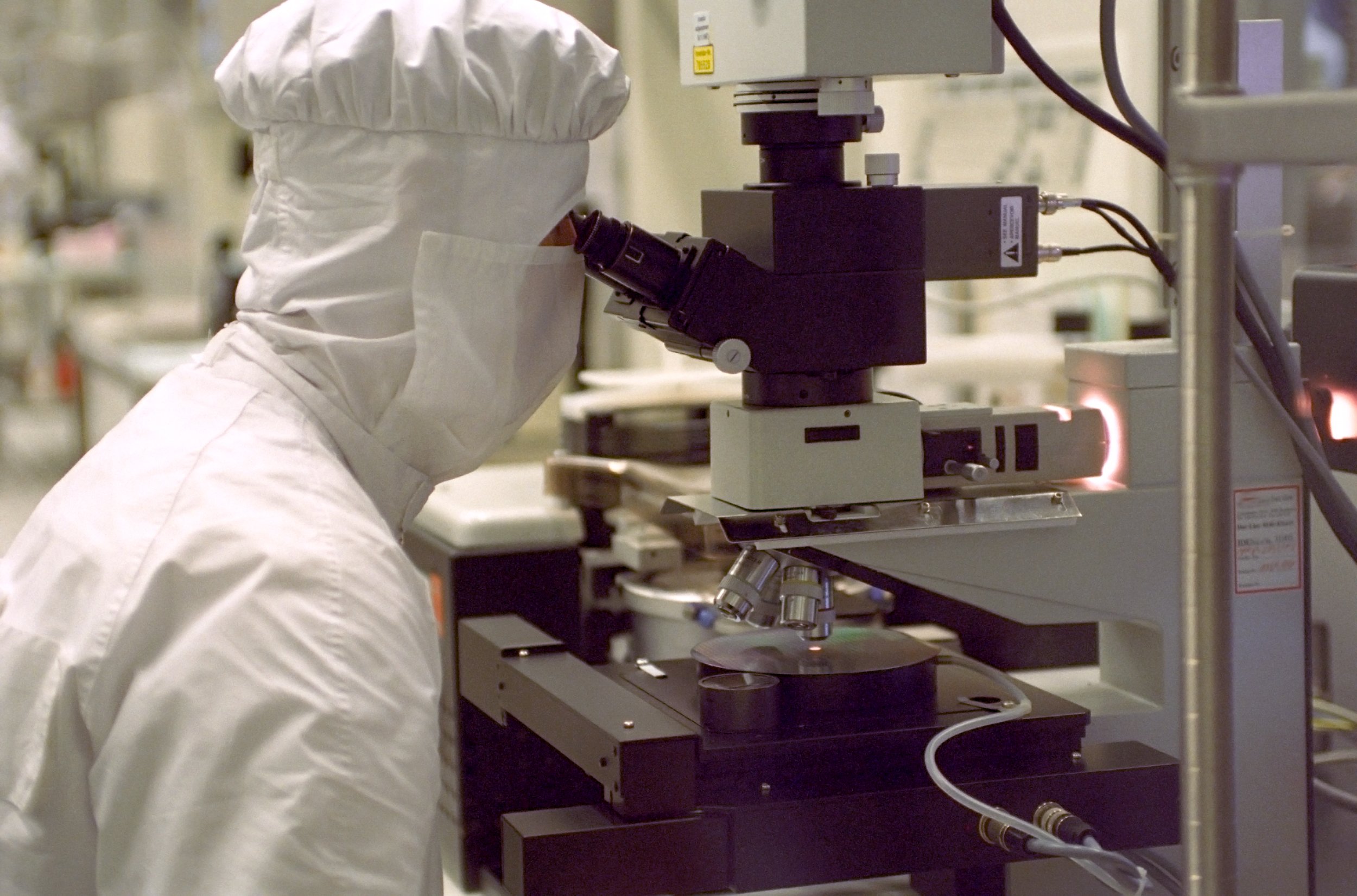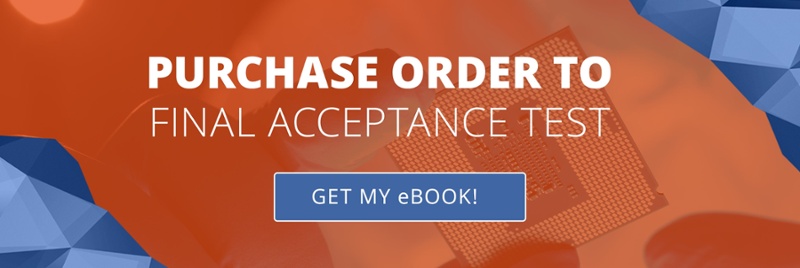- Etch Rate
Etch rate is the measurable quantity of how fast material is removed from the surface of a wafer and is typically expressed in Å, nm, μm per unit time (e.g. Å/s, nm/min, μm/min). It is usually measured following an etch process by dividing the total thickness change by the time of the etch or by taking several thickness measurements for different etch times and using a “best fit” to the slope. This is done when it is suspected that the etch rate may not be linear with time or that there may be a delay in the onset of etching. Occasionally, it is possible to measure the etch rate in real-time.
Etch rate should commensurate with the application. An application that requires a very shallow etch should have a relatively slow etch rate to maintain control. Conversely, for an application with a very deep feature, it is practical that the etch rate be faster to avoid a lengthy process time.
It's important to recognize that other parameters can affect the etch rate, such as the amount of open area or the aspect ratio of the structure (feature wide/feature depth).
There may also be tradeoffs between uniformity, profile, or selectivity when adjusting etch rate. Aspect ratio also affects etch rate in that the larger the aspect ratio, the slower the etching rate.
- Uniformity
Uniformity in the context of etching is a measure of consistency across a wafer for a specific parameter. Usually, uniformity refers to the etch rate, but it can refer to other post-etch characteristics such as selectivity and profile. As the data is a collection of measurements, it is common to use statistics to determine the spread of the data using standard deviations. It is common to refer to uniformity as one, two, or three sigma. An alternative approach is to use the formula of ((maximum value –minimum value)/2 x average values). One must remember to identify a zone where the metrology should be excluded due to clamping or other edge effects.
- Flexibility
The term “flexibility” might be best associated with the variety of capabilities of an etch system. While flexibility may not be critical in mass production environments, it may be the single biggest selection factor for universities with multiple disciplines performing a wide range of research. In academia, with limited resources, it is important that each piece of equipment be utilized fully. This often means equipment that is flexible in the sense that the research interests of many can be served. For example, while some may be working with materials that require elevated temperatures for efficient etching, others may be working with materials that are better etched at relatively low temperatures. Other examples include the RF power delivery ranges. Some applications will work in a regime where low power is desired while others work where a larger power supply may be needed. Another area of flexibility is how to handle a variety of wafer sizes. While most universities often are not concerned about processing on large wafers, some universities seek industrial collaborators who are likely working with larger format substrates.
- Profile
Profile refers to the profile or slope of the feature that has been etched. There are applications that demand vertical profiles and those that require a slope. When developing a specification, the profile is often mentioned as one of the parameters to be considered. Profile control is a function of the materials, process, and mask.
- Selectivity
Selectivity is the ratio between two etch rates, usually between the material being etched and the mask. In general, the greater the selectivity and the more vertical the mask, the easier it is to etch a vertical profile. Selectivity can be adjusted with the selection of the mask: hard or soft. Soft refers to a photoresist mask while hard can refer to a metal (e.g. nickel, chrome, aluminum) or a dielectric such as silicon oxide or silicon nitride. Another way to adjust selectivity is by adjusting the process which affects the relative etch rates.
- Substrate Temperature
Substrate temperature plays a very important role when writing a process recipe. Like in cooking, the temperature affects the results. The impact of temperature on most materials is an increase in the etch rate. While it might seem that the selectivity would stay constant with increasing temperature, not all materials increase their etch rate by the same proportionate amount. One example is InP: At lower temperatures the etch rate of InP is relatively slow and comparable to silicon oxide but at elevated temperature, the InP rate far exceeds that of a dielectric mask. Another example is etching silicon with a silicon oxide mask. In this case, the selectivity decreases as temperature increases.
Substrate temperature is relevant to what is known as “thermal budget”. Thermal budget refers to how much a sample can tolerate higher temperatures during processing. For example, some magnetic materials that require etching may lose some of their unique properties if their temperature gets too high. Photoresist or temporary wafer bonding materials may limit processing temperatures.
Every application has specific temperature requirements and choosing equipment that can accurately provide results within your temperature range is a crucial consideration.
- Morphology
Surface morphology refers to the microscale roughness of a surface. Not all applications require a surface to be atomically smooth. Referring to a surface as smooth only makes sense in a relative way. Fortunately, there is metrology that can make morphology quantitative. Atomic force microscopes can measure roughness (smoothness) in the sub-angstrom regime. White light interferometry is also used to look at surfaces in detail. Scanning electron microscope images can sometimes give quantitative information but are better when comparing surfaces. Sidewall morphology is a relevant metric for many photonic devices such as waveguides and edge-emitting lasers. However, it is often difficult to quantify the etch contribution and separate it from the initial mask roughness.
- Damage
Damage is a broad topic that ranges from particles that can impact yield as device killers to more subtle effects that may change or limit device performance. Although it may seem simple to eliminate particles, their source can often be quite mysterious and difficult to find. Not only can the mechanical aspects of a chamber be suspect, but the processes themselves can also generate particles. For example, some etch processes can generate polymers or re-deposited material that can eventually cause flakes that land on the wafer of the electrode. Understanding this helps in setting up cleaning protocols. Another consideration is whether the application is R&D where yield is not critical or where a few particles can drastically affect yield.
Other aspects of damage are much more complicated and difficult to measure. Contaminants, ultra-violet (UV), and ion bombardment can all affect some devices.
The first step is identifying what is considered damage to the device. In other words, does the damage affect electronic performance? A photonic aspect? A mechanical function?
Then, there is the challenge of actually measuring the damage. Simply building a device and observing that its performance is not as expected is laborious and can be discouraging. Often a test vehicle and multiple analytical techniques are needed to unambiguously identify a damage source. In place of this, it is advisable to have some understanding of the likely damage mechanisms and how they might impact the device. For example, a microelectromechanical system (MEMS) device with articulating structures will likely not be affected by plasma generated by ultra-violet radiation. Sometimes the answer can come easily with surface analysis metrology (e.g. energy dispersive X-ray analysis) and other times by controlling ion energy with substrate bias. Because of the complex nature of damage and the difficult metrology to discover its source, it is rarely included as a specification.
- Repeatability
Repeatability represents the capability to get the same results using the same equipment multiple times. Similar to uniformity within a wafer, repeatability refers to run-to-run measurements. As with uniformity, typically a standard deviation calculation or the ((max – min)/ (2 x average)) expression is used to quantitatively define this parameter. It is often referred to as wafer-to-wafer uniformity.
How Do You Choose the Right Equipment?
Etch performance drives results, and your plasma equipment drives your etch performance. But how do you choose where to get etching equipment? To get some ideas, download our free eBook "How to Choose a Plasma Etching and Deposition Equipment Partner.”






